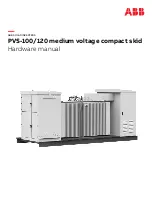
8.4.
Assessment of area.
Before installing the equipment the user shall make an assessment of potential electromechanical problems
in the surrounding area. The size of the surrounding area to be considered will depend on the structure of the building and other
activities that are taking place. The surrounding area may extend beyond the boundaries of the premises.
The following shall be taken into account :
a)
Other supply cables, control cables, signalling and telephone cables, above, below and adjacent to the welding equipment.
b)
Radio and television transmitters and receivers.
c)
Computer and other control equipment.
d)
Safety critical equipment, e.g. security monitoring of industrial equipment.
e)
The health of people in the vicinity, e.g. persons fitted with a pacemaker or hearing aid.
f)
Equipment used for calibration or measurement.
g)
The immunity of other equipment in the environment. The user shall ensure that other equipment being used in the
environment is compatible. This may require additional protective measures.
h)
The time of day that welding and other activities are to be carried out.
8.5.
Mains supply.
The equipment should be connected to the mains supply according to these instructions. If interference occurs, it
may be necessary to take additional precautions such as filtering of the mains supply. Consideration should also be given to
shielding the supply cable of permanently installed equipment in metallic conduit or equivalent. This shielding should be connected
to the power source so that good electrical contact is maintained between the conduit and the welding power source enclosure.
8.6.
Maintenance of the equipment.
The equipment should be routinely maintained according to these instructions. All access and
service covers should be closed and properly fastened when the welding equipment is in operation. The welding equipment should
not be modified in any way except for those changes and adjustments covered in these instructions. In particular, the spark gaps of
any arc striking and stabilising devices should be adjusted and maintained according to the instructions.
8.7.
Cables.
The welding/cutting cables should be kept as short as possible and should be positioned close together, running at or close
to the floor level.
8.8.
Equipotential bonding.
Bonding of all metallic components in the welding/cutting installation and adjacent to it should be
considered. However, metallic components bonded to the workpiece will increase the risk that the operator could receive a shock by
touching these metallic components and the electrode at the same time. The operator should be insulated from all such bonded
metallic components.
8.9.
Earthing of the workpiece.
Where the workpiece is not bonded to earth for electrical safety, nor connected to earth because of its
size and position, e.g. ship’s hull or building steelwork, a connection bonding the workpiece to earth may reduce emissions in some,
but not all instances. Care should be taken to prevent the earthing of the workpiece increasing the risk of injury to others or damage
to other electrical equipment. Where necessary, the connection of the workpiece to earth should be made by a direct connection to
the workpiece, but in some countries where direct connection is not permitted, the bonding should be achieved by a suitable
capacitance, selected according to national regulations.
8.10.
Screening and shielding.
Selective screening and shielding of other cables and equipment in the surrounding area may alleviate
problems of interference. Screening of the entire welding/cutting installation may be considered for special applications.
9. TROUBLESHOOTING
pROBLEM
pOSSIBLE CAUSE
REMEDY
Insufficient penetration or excessive
slag settlement.
Too high a cutting speed.
Torch is too tilted.
Workpiece is too thick.
Electrode and nozzle are worn out.
Slow the cutting speed.
Adjust the torch tilt.
Confirm workpiece thickness and re-check
technical data.
Replace electrode and nozzle.
Interruption of cutting arc.
Cutting speed too low.
Excessive distance between torch and
workpiece.
Electrode is worn out.
Intervention o e protection system.
Increase cutting speed.
Decrease the distance between torch and
workpiece.
Replace electrode and nozzle.
Check warning lights and take appropriate action.
The torch is cutting at a tilt when you
wish it to be perpendicular.
Torch position not correct.
Asymmetric wear of nozzle hole and/or
wrong assembly of torch parts.
Wrong air pressure.
Re-align the torch.
Check assembly (see fig.9) and change nozzle if
necessary.
Adjust air pressure to correct value.
Excessive wear of nozzle and
electrode.
Air pressure too low.
Contaminated air (humidity-oil).
Excessive pilot arc ignitions in the air.
Excessive cutting rate resulting in nozzle
holder damaged.
Increase air pressure (see para. 5.6).
Check air supply system (see Sections 4, 5 & 7).
Do not casually turn the torch on and off.
Change the nozzle holder and cut more slowly.
Environmental protection.
Recycle unwanted materials instead of disposing of them as waste. All tools, accessories and packaging should be sorted, taken to a
recycle centre and disposed of in a manner which is compatible with the environment.
When the product is no longer required, it must be disposed of in an environmentally protective way.
NOTE: It is our policy to continually improve products and as such we reserve the right to alter data, specifications and component parts without prior notice.
IMpORTANT:
No liability is accepted for incorrect use of this product.
WARRANTY:
Guarantee is 12 months from purchase date, proof of which will be required for any claim.
INFORMATION:
For a copy of our latest catalogue and promotions call us on 01284 757525 and leave your full name and address, including postcode.
01284 757500
01284 703534
Sole UK Distributor, Sealey Group,
Kempson Way, Suffolk Business Park
,
Bury St. Edmunds, Suffolk,
IP32 7AR
www.sealey.co.uk
Web
Original Language Version
PP35.V2 Issue: 3 - 15/05/12

























